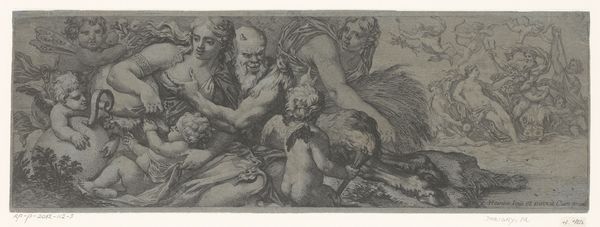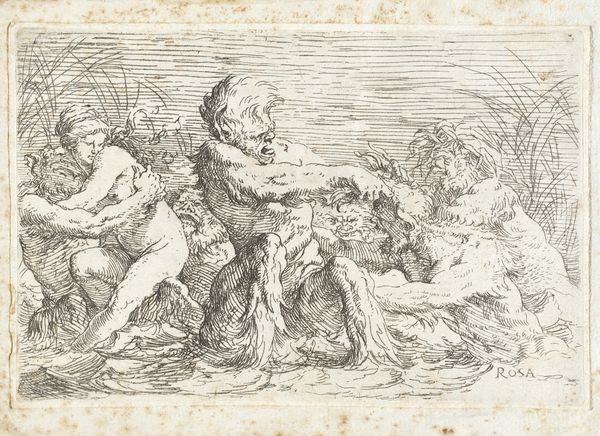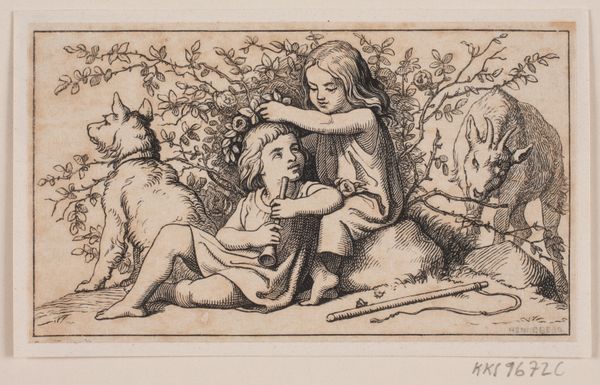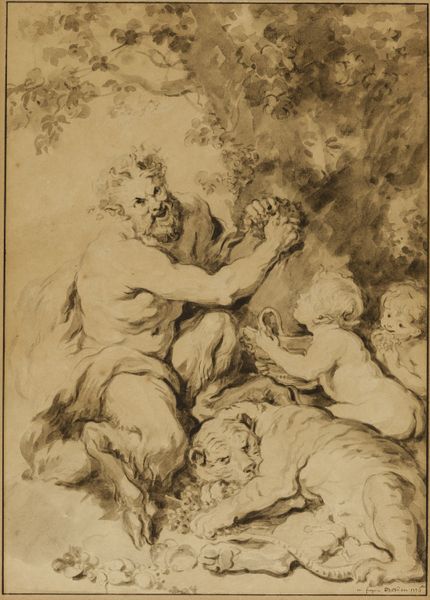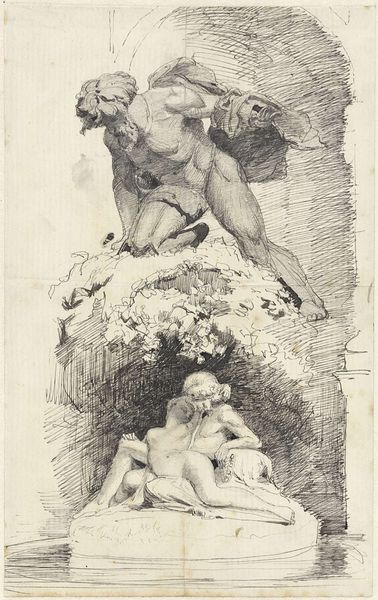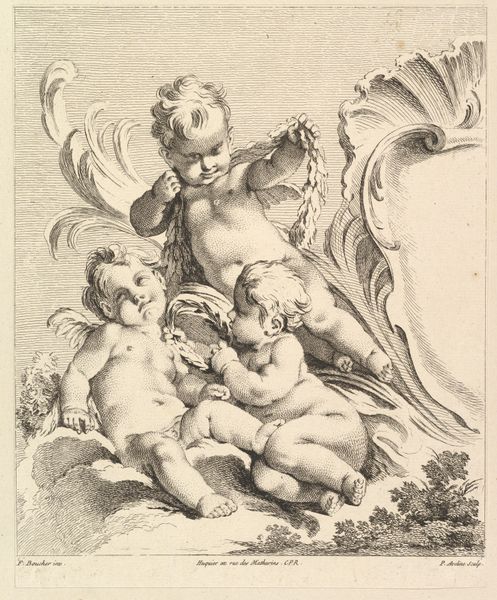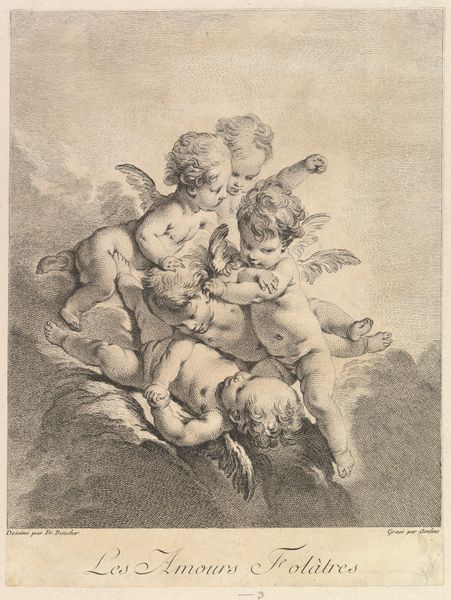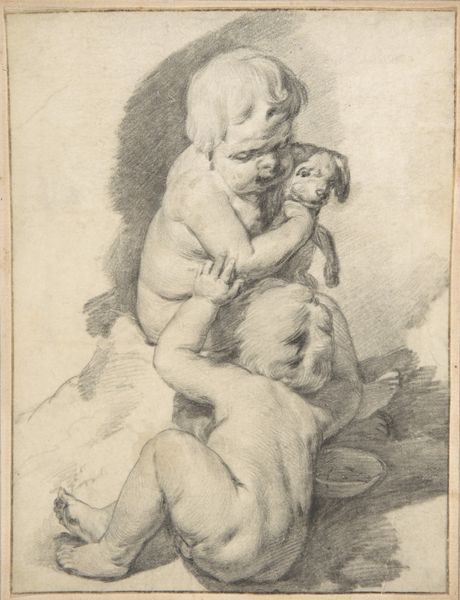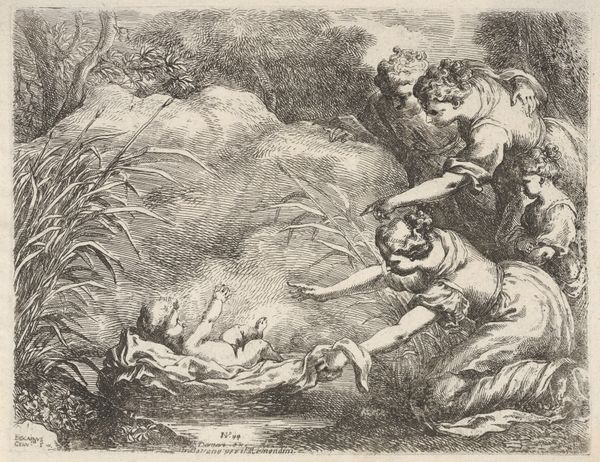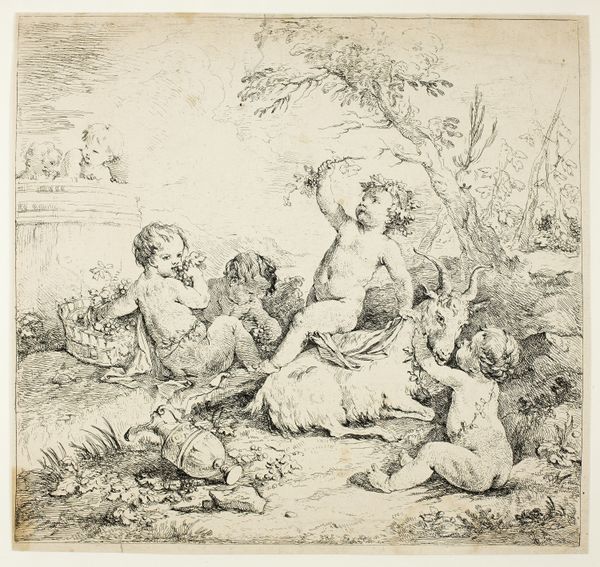
Plate 6: a woman at right holding her child who is sitting atop a donkey, a satyr at left looking towards the right, from 'Various figures and doodles' (Diverses figures et griffonnemens 1643 - 1648
0:00
0:00
drawing, print, etching, ink
#
portrait
#
drawing
#
allegory
#
baroque
# print
#
etching
#
figuration
#
ink
#
child
Dimensions: Sheet: 5 1/4 x 5 7/8 in. (13.3 x 14.9 cm) Plate: 2 9/16 x 3 3/4 in. (6.5 x 9.6 cm)
Copyright: Public Domain
Curator: Looking at this, I'm immediately struck by a sense of gentle affection, like a stolen moment of quiet joy. Editor: It's Stefano della Bella's etching, "Plate 6: a woman at right holding her child who is sitting atop a donkey, a satyr at left looking towards the right, from 'Various figures and doodles'," dating back to the mid-17th century. It resides now at The Met. Curator: A satyr! So there’s this rustic creature peering with such an intensity that’s making me reconsider that initial impression of tenderness. It’s an odd assembly—the mother, child, donkey and this, um, this woodland voyeur! I am reinterpreting everything now. Editor: Given the historical context of the Baroque period, that intensity could signal many things. Satyrs often represented unrestrained nature, impulse, or even a connection to earthly knowledge that "civilized" society repressed. So his gaze situates motherhood within this landscape of natural instinct. Curator: Interesting. To me, the donkey lends a rather folksy, almost peasant-like air to the Madonna and Child. Like this could be any woman escaping into the fields. Editor: Exactly. And think of the social implications embedded within that apparent simplicity. Della Bella might subtly be highlighting a sort of universalized female experience and her potential agency, placing a figure typically venerated in religious art, back on earth so to speak. Curator: But doesn’t that contradict the obvious luxury of detail here? It's far from raw! Those tiny etching lines, look closely and the fabric drapes gorgeously—are we romanticizing an idealized pastoral? Editor: Perhaps a productive tension. It prompts a contemplation on beauty, power, and perhaps, dare I suggest, a re-envisioning of what "divine" really is: intimate moments, close to earth, deeply humane and, thus, quietly disruptive. Curator: The ambiguity is fascinating. I walk away from it less with answers, more with... permission to ask more questions. And the satyr...well, he sees it all, doesn’t he? Editor: A sentinel holding a mirror, asking us what we see. A quiet scene of possible subversion, depending on how we decide to gaze back.
Comments
No comments
Be the first to comment and join the conversation on the ultimate creative platform.
